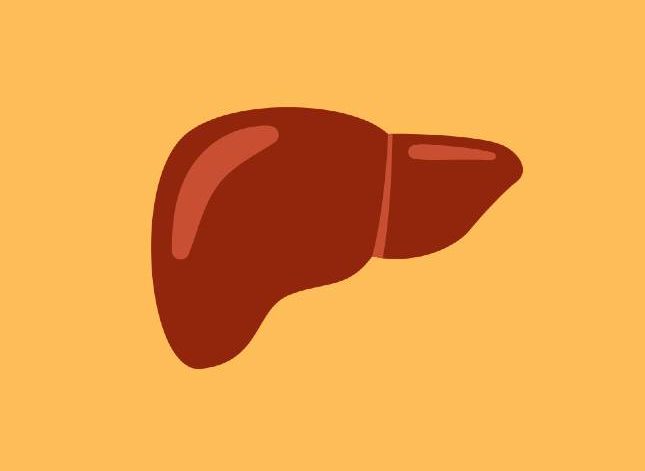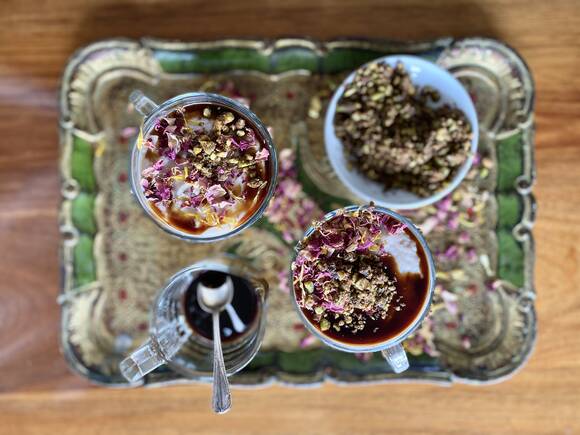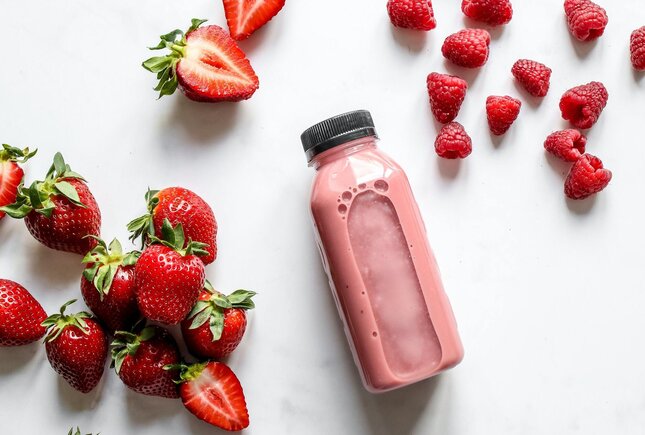Let’s talk about your liver. As we age we (usually!) become much more aware of how important our liver function is to overall health and wellness. For women especially, our liver in the Western biomedical paradigm, is the centre of detoxifcation and hormone regulation along. It’s also where we store our iron. And it’s affected by a sedentary lifestyle, over-eating and a diets high in saturated fats and sugar. If you look at the Eastern perspective, the liver plays a central role in menstrual regulation, blood quality and flow of blood along with being the seat of emotions. So in Chinese medicine, everything you feel….your liver feels. In fact in all systems of medicine that recognise the role of emotions in disease, maintaining a clear, healthy and strong liver is a priority.
Whatever life stage you’re in, it’s always a good idea to have daily food and lifestyle practices, along with the odd herbal medicine (of course!) to support liver function and health. Fatty Liver Disease is increasing, with studies suggesting it’s gone from affecting 25% of the general population to up to 60% of obese and diabetic individuals.3
So this article is all about maintaining a healthy liver and discussing the growing prevalence of Metabolic Associated Fatty liver Disease (MAFLD).
Is fatty liver dangerous?
Contrary to what it sounds like, it affects more systems than the hepatic-liver system. Having this condition poses risks for the cardiovascular system and is associated with other diseases (see below). Good news is, we can usually get to work on diet and lifestyle and see positive changes in our liver health providing we start sooner rather than later.
According to the Australian Liver Foundation, MALFD is the most common cause of chronic liver disease globally, affecting more than a third of Australian adults and often presenting with co-existing heart disease, type 2 diabetes and hypertension. Originally called Non-Alcoholic Fatty Liver Disease, the name change reflects our understanding of the role of metabolism in lifestyle related diseases like these. It’s more than just drinking alcohol.
It’s the constant intake of processed foods, saturated fats, fried foods, convenience foods, sugary sodas and biscuits, crisps and lollies. With our children’s diets being radically different from our own, this is something every parent can take note of and work proactively to prevent metabolic disease in our kids. Its been detected in children as young as 2 years old.2
How do you develop MAFLD?
You probably have a bit of an idea what causes it now. But let me sum it up:
- If you have a high BMI (>25)
- If you have a high waist circumference (>80cm for women, >94cm for men)
- If your diet includes a lot of fatty foods
- If you consume a lot of sugary drinks
- If you eat a highly processed diet
- If you have a sedentary lifestyle
- If you have insulin resistance
- If you have type 2 diabetes
- If you have high blood pressure
- Having Wilson’s disease, viral hepatitis or an autoimmune disease 2
So is it actually a metabolic disease?
So far it’s sounding like MAFLD is hanging out in the metabolic disease corner with obesity and diabetes, so yes, it’s actually seen as the liver version of metabolic syndrome.3
If you receive a diagnosis of MAFLD know that we’re all different and there can be gradations of the disease:
- Simple Steatosis is where there is too much fat in your liver, somewhere between 5-10% above the normal levels
- Nonalcoholic Steatohepatitis (NASH) is where along with the increase if fat in the liver, there is some inflammation and scarring
- Cirrhosis is the more serious of the three and involves more severe scarring that affects the way your liver function
One more note on the metabolic aspect of MAFLD is that during perimenopause our metabolic hormones start changing. We’re more at risk of increased visceral fat in the mid-section, fat gain, insulin resistance, high ghrelin, issues with leptin and satiety after meals.
So menopause itself increases the risk of developing MAFLD for women.
Fatty liver disease symptoms
The thing about MAFLD is that there aren’t really symptoms that jump out at you. It’s best to stay regular with your liver function blood tests and to watch your intake of fatty and sweet foods. Often the disease goes missed because of the lack of obvious symptoms.
What would I look for on a blood test?
Actually you’ll need more than a blood test. But a good start is a liver function test. Look for elevated liver enzymes which could any of these or all of them: alanine aminotransferase (ALT), aspartate aminotransferase (AST), GGT, ALP, as well as albumin, protein and bilirubin.
I’d recommend seeing your medical practitioner to ask for imaging tests to identify the presence of ‘hepatic steatosis’, along with having a blood test for Liver Function and a record taken of general health to make sure nothing’s been missed.
If you’re not an alcohol drinker and you tend towards normal weight or slim body type, then look for a high waist circumference and having a standard blood test done to assess your fasting cholesterols and blood glucose and C-reactive protein. That’s the latest recommendation on testing for MAFLD in non-drinkers. For everybody else, you’re aiming to identify overweight, obesity, hypertension, hepatic steatosis via imaging testing, type 2 diabetes mellitus and all the factors listed above.3
If we look at the main players in MAFLD there are 7, and these tell us what we need to testing to assess the presence of the condition:
- Arterial hypertension (High Blood Pressure) both increases risk of MAFLD and is can be worsened by it. Get your blood pressure checked regularly. You can use home machines, I will always test my patients in consultations, or you can visit your medical practitioner.
- Dyslipidaemia (abnormalities in your cholesterol levels) both increases risk of MAFLD and can be worsened by it. Look for high triglycerides (TG) and low high density lipoproteins (HDL) on a standard Lipid Profile blood test.
- Prediabetes or Diabetes both increases risk of MAFLD or can be worsened by it. Look for a positive blood test result for insulin resistance (IR).
- Changes in the way your body metabolises lipids and glucose can occur in MAFLD. Look for high trigylcerides (TG), low high density lipoproteins (HDL), elevated fasting blood glucose and insulin resistance in a standard blood test.
- The presence of thrombogenic and vasoactive molecules is thought to occur in MAFLD. Look for increased endothelin (ET-1 or EDN1), the cytokine Transforming Growth Factor beta (TGF-beta) and fibrinogen (FIB-4). These will require more specialized testing.1
- Increases in some of the inflammatory molecules in the body can result from MAFLD. Look for increased inter-leukin-6 (IL-6), (PCR) and Tumour Necrosis Factor alpha (TNF-alpha).
- The presence of obesity can either be causative or worsened by MAFLD. Look for elevated Free Fatty Acids (FFA), adipokines and the presence of insulin resistance (IR). The FFA and adipokines will require specialized testing and will likely be suggested in cases of obesity.3
It’s usually symptom free so you could be forgiven for missing it and be surprised at receiving a diagnosis of Nonalcoholic fatty liver disease. Also, you don’t need to be a drinker to develop metabolic associated fatty liver disease.
It might be helpful to be able to differentiate MAFLD from more serious liver disease. So if you have any of these signs, look further as there may be a more serious condition present.
Some signs that you have more serious liver disease are:
- yellow eyes and skin (jaundice)
- bruising easily
- dark urine
- swollen tummy
- vomiting blood
- black poos
- itchy skin 2
If you have any of these symptoms make your next step a visit to your medical practitioner and ask them to run some tests, in particular a Liver Function Test. Want to order a test right now? Click here and I’ll send you a test prescription (not Medicare covered).
I offer testing and review sessions to go through the results after testing. The tests are high quality and easy to organise and you can have your blood drawn at most pathology labs so it will be easy to find somewhere near you

Eat lots of fresh greens for liver health and wellness.
How to improve your liver health if you have MAFLD
Here are some ideas to point you in the right direction to losing the 5 – 10%of weight which is thought to be enough to reverse fatty liver disease. So before you start, you might want to:
- Note your BMI
- Note your waist circumference
- Note your hip circumference
- Note your scale weight (Kg)
- Here’s what I suggest in cases of fatty liver disease
- Fatty liver disease diet: First thing is to eat for liver health by including lots of green fruits and vegetables such as cucumber, zucchini, kale, broccoli, brussels sprout, salad greens, green apples and kiwi fruit. Those are my favourites but if there are other fruits and vegetables you like, enjoy as much as you can.
- Eat more fibre in your diet to assist with the binding and removal of cholesterols and fats in the body. This is especially important for women in midlife because our body composition changes as we move towards menopause. There’s a natural tendency for visceral and subcutaneous fat to increase and lean muscle mass to decrease so we start to see our waist disappearing and our overall body mass increasing. A high fibre diet rich in lots of vegetables along with chia puddings, psyllium husk and a couple celery sticks a day will really help offset these metabolic changes.
- Fatty liver disease self-care: Invest in a regular exercise routine that gets your heart rate up (but doesn’t push you into exertion, this just elevates cortisol and stresses your body out). Aim to do at least 30 minutes of exercise daily and keep moving through the day.
- Look critically at the presence of fats in your diet. Are they good fats (extra virgin olive oil, avocado, flaxseed oil) or bad fats (saturated animal fats, chips, trans fats in processed foods)?
- Make your home Low-Tox. Our livers spend a lot of time processing toxins from our environments so one way to reduce the burden on your liver is to clean your home regularly, avoid harmful sprays and chemicals and go shoe-free in the house. My CLEANSE program gives you all the guidelines of detoxing inside your body and inside your home. You might like to do that program once a year for a liver cleanse and you receive a tailored diet, herbs and home detox info as well.
- Address any existing excesses like high cholesterol or high blood pressure
- Avoid drinking alcohol
- Avoid eating a high sugar diet, avoid concentrated sugar foods like lollies, chocolate and cake
- Avoid smoking
Another perspective
Those of you who’ve worked with me know how I work with food as medicine, incorporating tried and tested dietary approached from East and West. In the Chinese medicine system a liver that becomes fatty is likely to be congested and overwhelmed, struggling with its workload.
This leads to the generation of liver heat, look out for headaches, migraines, irritability and frustration and some of the symptoms here but also this will worsen menopausal flushing, vasomotor symptoms and internal heat and dryness.
I always recommend a cooling and moisturising diet for any liver heat conditions and these are my top three tips. For more, book in a session and I’ll tailor the guidance to you.
- Eat lots of fresh green produce like celery cucumber and artichoke, preferring vegetables over fruit. Eat something fresh and green at every meal.
- Drink a herbal tea containing liver cleansing and cooling herbs to calm liver heat, once or twice daily. Use herbs like Burdock, Dandelion greens and Marshmallow root. Add a squeeze of lemon, the sour taste has a stabilising effect on the liver and assists it in detoxifying and cleansing.
- Avoid any of the foods that worsen liver heat such as alcohol, fried foods, processed or sugary foods, dry snack foods, chilli and spicy foods.
I hope this was useful, get in touch if you’d like to work on your liver health. No matter what stage of life you are, it’s never too late to improve your health and wellness.
Take care of you.


Hey there! Welcome to my world of totally natural and powerful healing medicines. Medicines from nature. Medicine from Source. I’m a naturopath and herbalist with extensive clinical experience working with a range of health conditions including hormonal, metabolic, mental health, sleep and more.
I’ve brought together years of clinical and teaching experience, academic skill and curiosity to bring you this blog. I hope you enjoy it! If you do, leave a comment, I’d love to hear from you!

References
- Albadawy, R., Agwa, S. H. A., Khairy, E., Saad, M., El Touchy, N., Othman, M., El Kassas, M., & Matboli, M. (2021). Circulatory Endothelin 1-Regulating RNAs Panel: Promising Biomarkers for Non-Invasive NAFLD/NASH Diagnosis and Stratification: Clinical and Molecular Pilot Study. Genes, 12(11), 1813. https://doi.org/10.3390/genes12111813
- Liver Foundation 2022. Fatty Liver.
- Pipitone, R. M., Ciccioli, C., Infantino, G., La Mantia, C., Parisi, S., Tulone, A., … & Petta, S. (2023). MAFLD: A multisystem disease. Therapeutic Advances in Endocrinology and Metabolism, 14, 20420188221145549.





